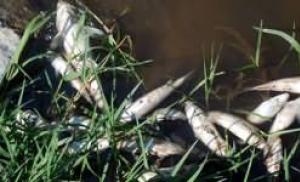Mackerel is a fish of the mackerel family. Mackerel fish, how it differs from mackerel
You can often see mackerel and mackerel sold side by side in stores. Some argue that they are the same thing. Some say it's completely different fish, although they are relatives. In this article we will figure out who is right and find out what kind of fish it is – mackerel.
We type “Mackerel” in the search and first of all we get to the Wikipedia page, which claims that mackerel and mackerel are the same thing.
 Wikipedia believes that mackerel and mackerel are the same fish. But you can't fool us :)
Wikipedia believes that mackerel and mackerel are the same fish. But you can't fool us :) But, if you take the issue seriously and rummage through the classification, it turns out that mackerel and mackerel, from a biological point of view, are two different kinds— Mackerel ( Scomber) and Mackerel ( Scomberomorus).
Name confusion
Often the trade name of a fish does not correspond to its real biological name (take, for example, the strange marketing moves that are gaining popularity). The confusion arose because English word"Mackerel" is used to refer to the mackerel family, which includes mackerel and mackerel (as well as tuna and bonito). Thus, in English, mackerel and mackerel are denoted by the same word, so sometimes in stores you can find mackerel under the guise of mackerel and vice versa. Often all members of the mackerel family, except mackerel and tuna, are sold under the name “mackerel”. What's the difference?
 Atlantic mackerel— Scomber scombrus
Atlantic mackerel— Scomber scombrus  Spanish mackerel - Scomberomorus commerson
Spanish mackerel - Scomberomorus commerson What is the difference between mackerel and mackerel?
Mackerel is much larger than mackerel and has a sharper snout. In the photo at the beginning of the article - mackerel (larger) - on top, mackerel, respectively, smaller and below.
 Mackerel - Scomberomorus
Mackerel - Scomberomorus Some sites write that the stripes and spots of mackerel never extend onto its white belly. In mackerels, the belly can be yellowish or gray, sometimes with spots and stripes. Perhaps this will help distinguish the species that end up on store shelves, but strictly speaking this is incorrect hallmark. For example, in southern mackerel ( Scomber colias) spots are distributed evenly throughout the body.
 Southern mackerel (Scomber colias) has spots on its belly
Southern mackerel (Scomber colias) has spots on its belly Mackerel meat is drier than mackerel, but is quite suitable for preparing, for example, salads. Mackerel has quite fatty meat with a bright taste and is a more valuable fish in this regard.
Biology of mackerels
Since mackerel and mackerel belong to the same family, let’s consider general outline features of their biology.
A distinctive feature of mackerel is the bony ring around the eye. Fish of this family have a series of small fins from the second dorsal fin to the caudal fin and from the caudal fin to the anus. These fins are needed to avoid turbulent eddies when the fish develops high speed. By the way, mackerel, mackerel and tuna are among the most fast fish in the world, their speed can exceed 70 km/h. During active swimming, the body temperature of these fish can increase by several degrees, helping them quickly cover significant distances.
All mackerels are predators that feed mainly on fish. Their main enemies are sharks, dolphins, fish eaters large birds, and of course, a person. They prefer to move in schools.
 Mackerel gather in large schools
Mackerel gather in large schools Spawning and feeding of juveniles occurs near the coast. The lifespan of mackerel is about 25 years.
Mackerel fishing
Mackerel is the object of both industrial and recreational fishing. For those who are close to the topic of fishing - a short film about mackerel fishing in Norway, and after it - a video about mackerel fishing in the Black Sea.
Trade names of fish in the Russian Federation often do not coincide with their biological names.
In addition, sellers - and especially at markets and food fairs - often write names on price tags that have nothing in common even with the official trade names of what is on the shelves. This is done, as a rule, to increase the attractiveness of the product: the available less valuable fish is given the name of a more expensive one, which makes it possible to increase its price completely unreasonably (but, alas, with just as impunity). However, sometimes sellers fill out price tags simply because of their level of literacy and knowledge of the Russian language - often depressingly low.
This is the first material in a large series of articles about who is who and who is passed off as who on the Russian fish market.
Mackerel and mackerel
IN kitchen_nax “from time to time, conversations about mackerel and mackerel flare up. I will not list all the speculations that I have read in the community over the past couple of years - but I will simply try to expand on the topic.
Its relative, the mackerel (genus Scomberomorus), also from the family Scombridae, is often mistaken for mackerel (a fish of the genus Scomber). Is that it's not different types, but just synonyms, not only sellers, but also many buyers, including fairly educated ones, are sincerely confident. The fact is that in English both types are called Mackerel, and this word can sometimes be seen on packaging boxes.
Well, in English-speaking countries both lobster and lobster are called the same: Lobster, what can you get from them.
In fact, mackerel is less valuable in nutritional terms; its meat is not white-pinkish or creamy-pinkish, like mackerel, but with a distinct grayish tint, or even just ugly gray. And it tastes worse - the texture of the meat is rougher and drier. Even smoked mackerel is not a delicacy.
Fortunately, they are quite easy to distinguish externally.
The mackerel has a silvery (sometimes white) belly; it is never covered with dark spots and stripes, so characteristic of the back of mackerels.
The mackerel's belly is grayish or yellowish, and is covered by dorsal spots and stripes.
With the same length, adult mackerel on the shelves is noticeably thicker in diameter than the most well-fed mackerel.
The one with the head is a mackerel. 
photo: N. Mikhalovsky
We couldn't find a mackerel with a head in Moscow, sorry.
On her price tag it was written “mackerel without heads”.
This is not to say that mackerel is completely inedible: when boiled, it goes well in salads that require lean sea fish. I do not recommend using it in any other way.
So, we did not set our sights on the huge rough mackerel, but chose mackerel. You also need to buy the largest one, weighing at least 600-650 g each. Do not take headless fish (and especially fillets): it will obviously be drier, because... Some of the juice will definitely leak out.
You should do the same with mackerel.
The best mackerel sold in Russia is caught in the North Atlantic and on
Far East. Therefore, we will deal not with fresh, but with frozen mackerel.
Most likely, you will come across frozen Norwegian.
The fish should be slightly defrosted. Just a little bit: so that the knife starts to pick it up (mackerel is so tender that if you over-freeze it, it will begin not to cut, but to choke - even when cutting with good fish knives).
Wipe the fish paper napkin(Never wash the fish: the water will make the fish sour).
We cut off the head and tail (3-4 cm from the end of the caudal peduncle or - which is the same thing - from the beginning of the caudal peduncle
fin). 
photo: N. Mikhalovsky
We open the carcass from the back: mackerel is a predator. 
photo: N. Mikhalovsky
It is better to dissect many predatory fish from the back (for example, pike perch and salmon), since fat deposition occurs mainly in the abdominal cavity. In fish that have been ripped open from the anus to the throat, the fat begins to actively melt through the cut during heat treatment, which is why fried or boiled pike perch seems a bit dry to many. We cut the carcass along the spine, and it falls apart into a layer of 2 halves, united by the belly.
On it lie the stomach, intestines and internal organs. We quickly remove them before they defrost and start to leak. 
photo: N. Mikhalovsky
Carefully cut out the spine. 
photo: N. Mikhalovsky
If we are preparing several specimens, it is better not to throw away the heads, tails and spine: they will make a good lean broth. It is important to remember to carefully remove the gills from the heads.
From the resulting layer, carefully scrape off the black film lining the abdominal cavity with the tip of a knife (it gives bitterness, it must be removed from all types of fish that have it), and remove small residues with a paper napkin. Under no circumstances should we wash fish.
Now the fully prepared layer can be:
1. Salt and pepper (as you would salt an escalope or a little more), some fans add a little crumble bay leaf and/or finely chopped garlic - but this is not for purists: it distracts from the pure taste of the fish. Place a sheet of parchment paper on the fish and roll it up: adjacent turns of fish will be separated from each other by the paper. Tie with a strong thread or secure with an elastic band. Let stand in the refrigerator for 2-3 hours (at +3-5 C), then put in the freezer. After 48 hours, remove and cut the roll crosswise into 5-7 mm circles. Taste unfrozen. Estimate. There is no paper or thread. You can add soy sauce.
2. Place skin side down and cut into slices 3-5 mm thick. Cut at an angle of 30 degrees to the skin: then the area of the plates is larger. Place the slices on a plate in one layer, add salt and pepper (as you would salt an escalope), turn over, and add salt and pepper. Cover with parchment paper. If all the plates do not fit on the plate in one layer, place the second layer directly on this parchment. Place in the refrigerator for 30 minutes (at +3-5 C). Take it out and enjoy it, purring. An excellent snack for vodka.
In addition, it goes well with beer or dry white wine.
3. Fry on the grill over not too hot (gray) coals for 4-5 minutes on each side. First, the side with the skin should be facing the coals: this makes it juicier. In addition, this way the fish will not burn, even if the heat is too strong. Serve with light light beer or dry white wine. 
photo: N. Mikhalovsky
And remember: the lipid composition of mackerel is such that saponification of fats will begin literally a few hours after defrosting. The very next day, whether fried or salted mackerel, you will feel a slight taste of rancidity. Do not cook mackerel for future use (except for freezing it into rolls), fry or salt as much as you can eat today.
Those who are not yet familiar with this representative of the mackerel family are probably wondering what kind of fish mackerel is and how to cook it. What makes this product special is its versatility. Mackerel fillet is ideal for baking, smoking, frying and other methods of heat treatment.
Mackerel - what kind of fish is it?
Individuals of this family reach sizes of up to 4.5 meters, while the smallest are only 60-70 centimeters. Mackerel is a predatory fish whose diet includes plankton, anchovies, shrimp, shellfish, juvenile herring and sand eels. This specimen lives in sea and ocean waters at a depth of up to 200 meters.
The name of its varieties comes from the place of residence:
- Spanish (striped) mackerel – Mediterranean Sea, Indian and Pacific Oceans;
- Japanese mackerel – waters of China, Japan, Korea;
- Indian (king) mackerel - the shores of Asia.
This fish is caught in large quantities and is considered a valuable industrial product. Due to the impressive abundance of individuals of this species in the world's waters, International Union Nature Protection has given it the status of “Case of Slight Concern”.
Taste, calorie content
Mackerel is a nutritious fish with firm white meat. It is quite fatty, but at the same time, somewhat harsh, which should be taken into account during the cooking process. The taste of mackerel is often compared to the taste of mackerel. Despite their close biological relationship, these representatives have a significant difference. Mackerel can be called dietary, because it is drier than mackerel.
Like any other sea fish, mackerel is rated as low-calorie. So a raw carcass contains about 105-139 kcal, steamed - 134-158 kcal. The discrepancy in the number of calories depends on the variety. So, king mackerel will be less nutritious than Spanish.
Nutritional value varies within the following limits:
- proteins: 20-22 g/100 g of product;
- fats: 3-4 g/100 g of product;
- ash: 1-2 g/100 g of product;
- water: 73-75 g / 100 g of product.
What is noteworthy is that this individual practically does not include carbohydrates.
5 delicious mackerel recipes
To cook mackerel fish you do not need to have great culinary skills. It is enough to choose it correctly when purchasing and strictly follow the recipe. An indicator of the quality of this seafood is pink gills and transparent, clear eyes. Additionally, you can try leaving a dent on the carcass with your finger. If the meat quickly returned to its former shape, it is a sign of freshness.
Homemade smoked mackerel
Delicious analogue of store-bought smoked fish can also be prepared at home. At the same time, this recipe does not require a large number of ingredients, you just need to have the desire and a smokehouse.
The ratio of products in this case is as follows:
- two-kilogram mackerel;
- table salt – 200 g;
- granulated sugar – 20 g.
First of all, the fish needs to be cleaned and washed. To do this, the head is cut off, the belly is cut and all the insides are taken out. Fresh fish should be washed in cold running water at least twice.
We tie the cleaned carcass with thick thread and sprinkle it generously with sugar and salt. The fish remains in this state for 45 minutes to an hour. After this, wash off the salt, tie the product in the open air and leave for another 1 hour.
Now the mackerel is ready for smoking. To do this, load it into the smokehouse and put it on low heat. After smoke appears, set 80ºC for 1 hour. As soon as the carcass has cooled, it can be served with herbs and lemon.
Bake in foil in the oven
No less interesting way cooking - mackerel in the oven. In such conditions, it turns out soft, the meat easily falls off the bone.
To achieve maximum taste you will need:
- two mackerel;
- one onion;
- weak mustard - 1 tbsp. spoon;
- lemon juice – 3 teaspoons;
- one pinch of salt;
- one pinch of black pepper.
Cooking fish begins with cleaning it: cut off the head, remove the intestines and wash thoroughly.
- Next, prepare the marinade. To do this, mix the chopped onion, mustard, lemon juice, salt and pepper.
- Lubricate the fish with the mixture (you can stuff the carcass with the leftovers) and leave it to marinate in the refrigerator. The marinating time can range from half an hour to half a day.
- Wrap the soaked mackerel in foil and place on a baking sheet. The baking process takes about 40-50 minutes at 180ºC, but do not forget that any fish or meat should only be placed in a preheated oven.
Fish fried with golden brown crust
Among the more nutritious dishes, it is worth highlighting fried mackerel. This delicacy will not leave anyone indifferent. Even during the cooking process, relatives will repeatedly visit the kitchen to find out what aromatic food is being prepared for dinner.
The list of required products is as follows:
- half a kilo mackerel fillet;
- one egg;
- breadcrumbs – 1 teaspoon;
- mayonnaise – 1 tbsp. spoon;
- margarine – 1 tbsp. spoon;
- half a lemon;
- greens to taste;
- one pinch of salt.
Cleaned and prepared fish can be divided into portions or fried whole.
Cooking consists of two stages.
- First, dip the carcass in a beaten egg, then in breadcrumbs and fry in margarine. It is better to keep the heat on medium so that the dish does not burn and does not remain raw inside.
- Meanwhile, let's start with the sauce. To do this, mix mayonnaise, lemon juice, herbs and salt in a separate bowl. A few more lemon slices can be used as a garnish.
Mackerel fricassee
Fricassee is a delicious French dish that can be interpreted as a stew. This dish will consist of two components: tender fish stew and sauce.
Full list of ingredients:
- mackerel – 250-300 g;
- green peas – 50 g;
- one onion;
- one carrot;
- celery root – 20-30 g;
- 50 ml each of fish and vegetable broth;
- one teaspoon of flour;
- butter - 20 g;
- a bunch of parsley;
- one pinch of salt;
- one pinch of ground black pepper.
As expected, we remove the insides and heads of the mackerel and wash it clean.
- After cutting the fish into pieces measuring 4x4 centimeters, boil it in salted water for about 5-7 minutes after boiling.
- At the same time, cook vegetables: onions, carrots, celery and peas.
- There is no need to drain the broths; mix them with flour and melted butter and get a delicious sauce.
- Pour the finished boiled meat and vegetables with the resulting liquid gravy, add salt, pepper and garnish with herbs.
Royal steaks
Fish steaks are cooked on the grill, which allows you to maintain the calorie content of the dish and bring it as close as possible to the restaurant version.
To prepare this culinary masterpiece you will need:
- one large (king) mackerel;
- olive oil – 180-200 ml;
- garlic - a couple of cloves;
- a couple of lemons;
- one pinch of ground black pepper;
- one pinch of salt;
- greens for decoration.
We divide the cleaned and washed mackerel into several steaks (about 6-7 servings are obtained from one carcass).
- Lubricate the resulting pieces generously with chopped garlic, vegetable oil, salt and spice.
- After this, place the fish on foil and lemon slices on top of it. The entire surface of the steaks should be covered.
- Prepare the grill and bake the mackerel on it until done. Depending on the intensity of the fire and the size of the portions, the cooking time ranges from 20-35 minutes.
- The finished dish is served in combination with dry white wine.
As practice shows, mackerel is worthy unique fish, which will become a healthy dinner and a hearty lunch. Bon appetit!
Mackerel, what kind of fish is it, what does it look like, where does it live, what does it eat, what does it taste like and does it bring benefits to the human body? We will help you find answers to all these questions right now. In the meantime, we confidently declare that mackerel is a fish that is worthy of attention; it is not for nothing that chefs and nutritionists all over the world love it. Although unscrupulous sellers are trying to sell it by passing it off as equally healthy, but more expensive mackerel. It is the last representative of our article that is incredibly similar in appearance.
Mackerel, what kind of fish, photo
King mackerel is a valuable commercial fish belonging to the mackerel family of perciform fish. The distribution area of these sea creatures quite diverse, but they still mainly live in the Atlantic and Arctic Oceans.
Externally, the king mackerel resembles the famous mackerel, but has its own differences with it, which we will talk about below; the genus includes nine species of fish. All of them are endowed with a long elongated body, powerful jaws, a fork-shaped tail and a striped pattern along the entire perimeter of the gray-silver back.
Description of the fish
Mackerel, a fish that primarily lives in oceanic coastal waters, is an individual with a spindle-shaped body, small rudimentary scales, which in appearance do not resemble scales, like those of other fish, but a thin film. The back of these representatives is blue-steel with patterns in the form of broken stripes, large dots or spots, depending on the species, the abdomen is silvery, but some representatives also have a yellowish tint. Mackerel does not have a swim bladder.
Fish of this class may differ from each other in length, thickness, and weight. The small specimens that we purchase in the store are usually 50-60 cm long. Large fish can reach up to 5 meters, these are striped or Spanish mackerel.
Mackerel, what kind of fish does it taste like? These fish taste like mackerel, it’s not for nothing that they are often confused with these inhabitants underwater depths and are passed off as them, but mackerel is less fatty and less dense, has drier meat, reminiscent of sawdust in consistency.
Why king mackerel, it's not official name fish. Royal, because it has beautiful white meat, rich in nutrients and incredibly pleasant taste qualities. Previously, this fish was very revered by the highest nobility, kings, which is where its unusual name came from.
Where is it found?
You can meet mackerel in different countries peace. Representatives of this genus are found off the coasts of Africa, America, and Europe, while the bulk of individuals are concentrated, as noted above, in the waters of the Atlantic and Arctic Oceans.
Mackerel is also found in Indian Ocean, you can notice it in the Pacific, and sometimes individual individuals are caught by fishermen in the Mediterranean and North Seas.
The most comfortable water temperature for mackerel habitat is from +8 to + 19 degrees. The marine life spends the winter at a depth of about 200 meters, in the summer it rises a little higher, therefore, mackerel cannot and will not live in lakes and rivers.
Lifestyle
Mackerel is a predator fish; it has a powerful jaw with triangular teeth, which they use to grab their prey - smaller fish that live nearby.
Mackerel prefers to stay in small schools near coral reefs or near rocky coasts, where it also finds food. These individuals are not friends with larger representatives of the underwater depths - sharks, tuna, etc., for which they themselves are bait and a tasty lunch.
What does it eat?
The food of marine life is varied, however, it is mainly live sea inhabitants - squid, anchovies, sand eels, sardines, plankton and other smaller fish.
Reproduction and spawning
They spawn in batches and are quite prolific fish. Spawning for these individuals begins in the first month of spring and ends by mid-summer; the main peak of reproduction, as experts note, occurs in May.
For spawning, representatives of this genus choose shelves, coastal zones. Mackerel spawn at the same depth where they mainly live in winter - 180-200 meters. At one time, the female can spawn about five thousand eggs, the diameter of one such egg is approximately 1 mm. Each individual egg contains a drop of fat, which at low temperatures (up to +13 degrees) develops into a larva. The process of such development lasts about a week, during which time the larva grows several millimeters and hatches into the water.
The newly born fry grow very rapidly. If the eggs were laid in May, then by the beginning of August they will already be individuals with a length of up to 5-6 cm, and after another month 12-13 cm. In the fall, the mackerel will reach a size of 16-18 cm, and will become outwardly full-fledged, but still not a very large fish. The most active growth in these marine inhabitants is during the period from birth to puberty. How younger fish, the faster and more actively it grows. When the body length of mackerel reaches 30-32 cm, the growth of individuals decreases significantly, and now they grow less intensively.
Useful properties and contraindications
Mackerel, like mackerel, is very healthy foods. Greatest benefit comes from this fish if the individual is caught between September and November. At this time, mackerel stores fat for the winter, and therefore contains a huge amount of polyunsaturated fats and fatty acids. In this fish large quantities Vitamins D and B12 are present.
Numerous Scientific research confirm that eating such fish:
- - improves brain function;
- - helps relieve arthritis;
- - has a beneficial effect on the heart and blood vessels;
- - fights the signs of psoriasis;
- - treats bronchitis and other diseases of the throat and respiratory tract;
- - useful for diabetes, prevents its development;
- - prolongs life, slows down the aging process, both organs and tissues of the body, and the skin;
- - renders beneficial influence on oncological diseases, suppresses the growth of cancer cells;
- - thins the blood, prolongs the youth of the arteries;
- — improves metabolism, restores metabolic functions;
- - increases the amount of oxygen going to the cells when there is a lack of it;
- — charges with energy and strength;
- - strengthens bone tissue, cures joint diseases, has a noble effect on cartilage tissue.
Contraindications to consumption of mackerel:
- — allergies to seafood, individual intolerance to components contained in fish;
- - problems with the gastrointestinal tract;
- — serious illnesses hearts;
- - kidney and liver diseases.
Despite the fact that mackerel is a very healthy and nutritious fish, there is no need to abuse it, everything should be in moderation. The seafood delicacy can benefit the body only if you eat 150-200 grams of this product in any form no more than three times a week.
Nutritional value, calorie content
100 grams of mackerel meat contains from 112 to 120 calories, depending on the fishing season.
How to cook mackerel
King mackerel is widely used in cooking. This fish is boiled, stewed, fried, grilled, baked in ovens, fish soup is made from it, mousses are made for sandwiches, served in batter and with cheese.
You can cook mackerel in a frying pan, in the oven, over coals, or in a saucepan. It is best to take fish fillets for cooking, although the bones are not small, they are very easy to remove from the finished dish.
In stores, mackerel can be seen salted or smoked, and in these forms the seafood product is incredibly tasty and healthy.
Price
The average cost of fresh frozen fish on the market in Russia reaches 300-400 rubles per kilogram. Cold smoked mackerel costs the consumer on average 150-200 rubles per piece, hot smoked mackerel – 150-170 rubles per piece with an approximate weight of 300 grams.
What is the difference between mackerel and mackerel?
Many people wonder whether mackerel and mackerel are the same thing or not. No, these fish are representatives of the same genus, but completely different species, although they have both external and internal similarities.
There are several differences between these fish:
- Mackerel are much larger and longer than mackerel.
- Mackerel on the back have mostly dark spots or even stripes, while mackerel, in turn, has, so to speak, a tiger color all over the back.
- Mackerel, in comparison with mackerel, has less dense and fatty meat, although it is no less rich in nutrients and elements.
We hope that our article will be useful to you, and now you can accurately answer the question mackerel, what kind of fish and where it lives, how much you can buy this fish in Russia, what it tastes like, and how it can be cooked.
Mackerel is everyone's favorite fish, which is valued not only by chefs, but also by fishermen. Quite often during festivals it is present on our tables in salted or smoked form. At the same time, many sellers pass off mackerel as mackerel and vice versa. This fish can be found in the Atlantic Ocean.
What is the difference between mackerel and mackerel: the main differences?
Both mackerel and mackerel belong to the mackerel family. They look alike appearance and sizes. But in the store you can offer to choose a carcass different sizes under the same name. If the fish carcass is smaller, then you can buy mackerel with confidence. And if the fish is fat and large, then it is mackerel. This is due to the fact that the supply of this fish in the ocean is too large, so many fishermen prefer mackerel.
Differences between mackerel and mackerel
When importing fish into stores, confusion often occurs. All products that imported, masked on English language. It is noted that both fish have the same markings. The fish are somewhat similar to each other. In order to distinguish them, you need to know all the features of each of them.
In order to understand the differences, you need to see the mackerel in the photo once. OR study photos of mackerel, for example, in fishing magazines and books. External features fish are as follows.

Why is mackerel fishing interesting?
Mackerel and mackerel are fatty fish, which are rich and saturated with various omega acids. They are important to maintain human health. It is actively used for food, but in terms of taste characteristics it is inferior to its relative. Mackerel meat can be tough and dry when cooked.
When cut, mackerel has soft pink meat. In turn, mackerel has gray tint meat. Cutting the fish simple enough. There is no need to remove the scales to cut the fish. The fish fillet is easily separated from the ridge and can be cleaned with a regular knife, if small bones it's not in it. Basically, the fish is cooked on the grill, baking it under lemon juice, or lubricating with olive oil.
Mackerel and mackerel fish: differences
 Residents English speaking countries Mackerel is often confused with mackerel. Fishes of the mackerel family are somewhat similar to each other. But they often differ in size. These could be fish from sixty centimeters to a meter, and sometimes more. Any fish of this family belongs to predatory fish. Mackerel has more large size unlike real mackerel, elongated body and powerful jaws, fish have large triangular teeth. At the same time, the fish is distributed in warm seas and near rocky coasts and coral reefs.
Residents English speaking countries Mackerel is often confused with mackerel. Fishes of the mackerel family are somewhat similar to each other. But they often differ in size. These could be fish from sixty centimeters to a meter, and sometimes more. Any fish of this family belongs to predatory fish. Mackerel has more large size unlike real mackerel, elongated body and powerful jaws, fish have large triangular teeth. At the same time, the fish is distributed in warm seas and near rocky coasts and coral reefs.
Striped or Spanish mackerel is a large representative of this species. She lives in the Indian Ocean and the west Pacific Ocean. The color of the striped fish is distinguished by broken stripes and a light belly. Mackerel quite common in Asian countries. In this habitat it can reach one meter in length. In the southeastern part, the mackerel is slightly smaller and reaches no more than sixty centimeters in length. Mackerel fish are classified as predators. She lives in natural conditions and feeds exclusively on mollusks and eels. Kingfish has firm and white meat and also has beneficial properties and good taste.
How to choose mackerel correctly?
You should choose mackerel fish only if there are clear, transparent eyes and pink gills. At pressing on the fish there should be no dents left. Fresh fish has a faint and sweet odor. This variety does not have a strong fishy odor. It should look moist and shiny, and traces of blood and stains on the carcass are also unacceptable.
In which countries is mackerel preferred?
 In our country, mackerel is rarely sold. Basically, if they do this, it is under the guise of mackerel. And in many other countries, especially in central Europe, it preferred as main course. For example, in England they fry it. In France it is baked in foil. In the eastern part it is fried a little. In some countries, it is even eaten raw and seasoned with green horseradish or soy sauce.
In our country, mackerel is rarely sold. Basically, if they do this, it is under the guise of mackerel. And in many other countries, especially in central Europe, it preferred as main course. For example, in England they fry it. In France it is baked in foil. In the eastern part it is fried a little. In some countries, it is even eaten raw and seasoned with green horseradish or soy sauce.
People associate mackerel with the open ocean, while mackerel is more often remembered smoked or frozen. In any case, these are different fish, although from the same family, both mackerel and mokrel. Their immediate family are tuna and bonito. Despite the distinctive external differences in appearance, they have many similarities and the main thing is family.
The family turns out to be huge, and it includes fifty-one fish. Moreover, each of them has its own important. It is worth noting that mackerels are fast swimmers. For consideration and preparation, three groups of fish from this wonderful family are distinguished.
- Small in size (up to one meter in length).
- Medium size (up to three meters in length).
- Big size(from three meters in length).
Mackerel is a schooling fish that has a spindle-shaped body and a thin and strong tail with a powerful crescent-shaped tail. Rarely can it grow to sixty centimeters. It is characterized large in number and occupies major roles in ocean fisheries. It feeds exclusively on small fish. The lifespan of mackerel is no more than eighteen years. She lives at average temperature indicator and makes long-distance migrations.
Today, two types of mackerel can be distinguished: Atlantic or Australian.

There are other species, for example, Japanese mackerel. Regardless of its habitat, it comes to us only in frozen form. The most big fish - this is Atlantic. Her weight reaches three and a half kilograms. The Australian one can weigh up to one kilogram. And the Japanese fish is about three kilograms.
Fish caught in the spring has a fat content of 3%. IN autumn period the fish reaches up to 30% fat content. The most fatty mackerel is great source fatty acids and vitamins. Its use is necessary for the human body. It is worth noting that it is recommended to cook mackerel only by baking or grilling over coals.
Both fish have a high percentage of fat content, but despite this they contain a high percentage of vitamins and microelements. That's why cooking or frying This product can spoil all the beneficial microelements necessary for the body.













